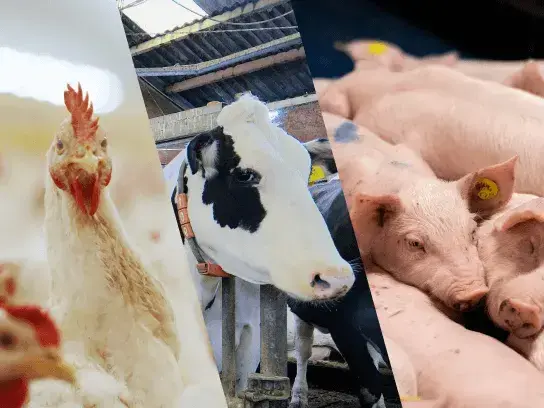- Cattle
- Dairy cattle
- 2 minutes read
Light intensity and quality
Brighter light intensities elevate activity levels and contribute to better hormonal responses, making calving events more synchronized. But it’s not just about brightness – the quality of light matters too. Blue and white light spectrums stimulate daytime behaviors, helping to reinforce natural rhythms and encourage calving during daylight hours. This improves calving predictability, allowing you to monitor closely and minimize the challenges of nighttime births.
Pro Insight: Aim for uniform lighting across all areas of the barn to avoid dark spots that disrupt cattle routines and stress levels.

Advantages of Daytime Calving
Daytime calving offers numerous benefits, from better monitoring to improved care during critical post-birth hours. Here’s how you and your herd can benefit:
- Greater monitoring capabilities: Daytime calvings allow you and your team to maintain close observation, ensuring early detection of any complications and enabling faster intervention if needed.
- Enhanced calf-care: When calves are born during the day, they can receive immediate, high-quality care. This includes early feeding, health assessments, and environmental adjustments that set calves up for healthier starts. The first hours post-birth are essential, and timely attention can make a significant difference in calf vitality and long-term health.
The role of HATO cattle lighting
At HATO, we understand the science behind lighting’s impact on livestock health and productivity. Our advanced cattle lighting solutions are tailored to optimize photoperiod, intensity, and quality, supporting healthy herd management.

RUDAX: Lighting for enhanced reproductive health
Our RUDAX system is designed specifically for cattle, delivering consistent lighting that aligns with natural circadian rhythms. Many farms using RUDAX have reported up to 14% increases in milk production and improved calving predictability.
Case in Point: One of our dairy clients implemented RUDAX and saw a 20% increase in daytime calvings within six months, greatly improving their calf survival rates and reducing intervention costs.
FORTIS: Powerful, reliable lighting built for farms
The FORTIS system provides robust, even light distribution, ideal for large barns. By minimizing dark spots and maintaining uniform light intensity, FORTIS keeps cattle calm and active, supporting synchronized calving cycles and better overall herd well-being.
 Quick guide to optimizing your barn’s lighting
Quick guide to optimizing your barn’s lighting
To help you get started, here’s a quick checklist for adjusting your barn lighting to encourage optimal calving times:
- Set photoperiod to 16 Hours of light – Ensure cows have consistent daylight exposure to regulate hormonal rhythms.
- Use Blue/White light spectrums – Opt for lighting with a blue or white spectrum to encourage daytime activity.
- Maintain uniform intensity – Position lights to cover all areas evenly and avoid stressing cattle with dark patches.
- Schedule regular maintenance – Clean lights every few months and replace any dim or faulty bulbs to sustain proper intensity.
Want more details on how to create the ideal lighting setup?

.webp)
.webp)



